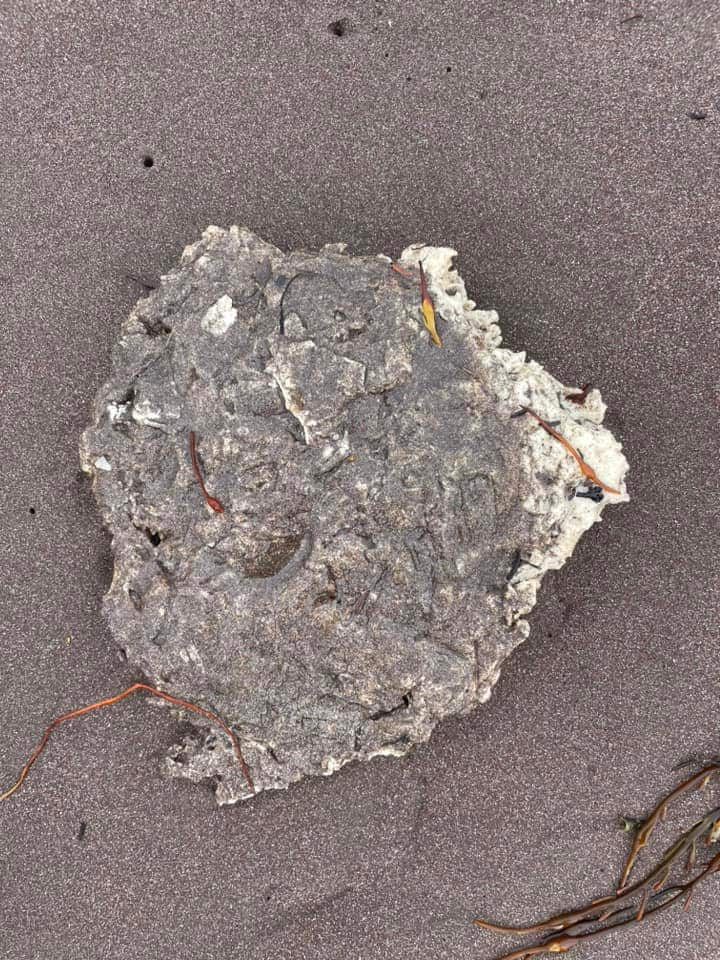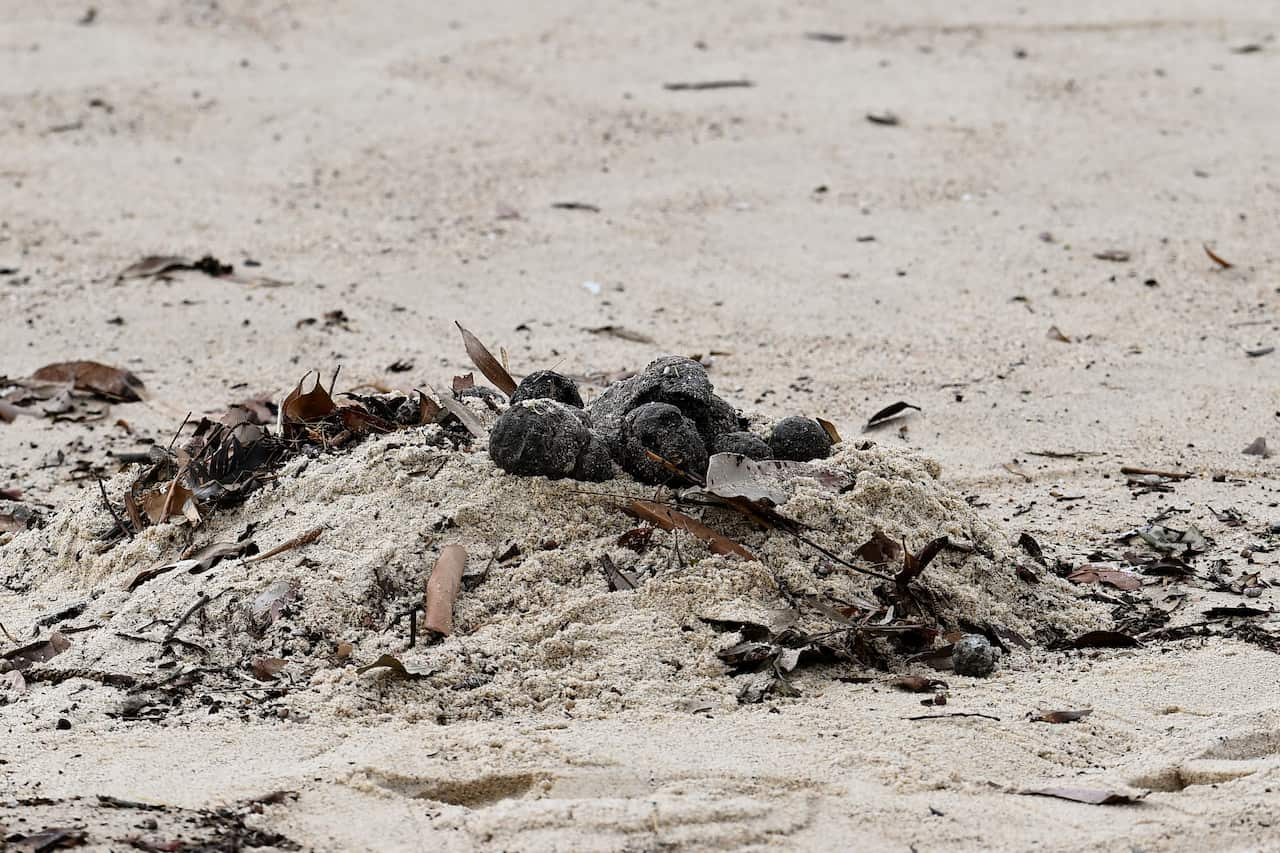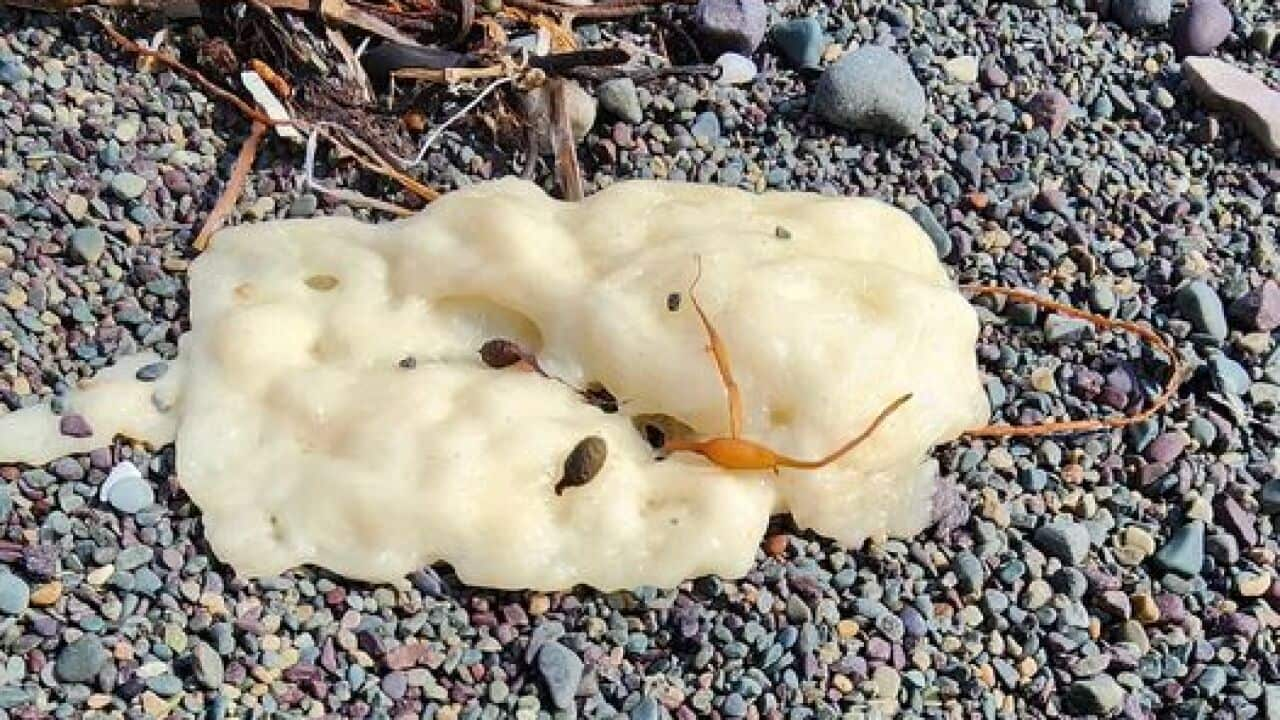KEY POINTS
- Mysterious white blobs have been washing up on the shores of a Canadian island province.
- Canadian authorities say they are treating the matter “very seriously”, but are scratching their heads over what exactly they are.
- Preliminary analysis of the blobs suggested they could be plant-based.
Tar balls that closed Sydney beaches had authorities stumped and as they tried to solve the mystery, others thousands of kilometres away were also scratching their head over another coastal puzzle.
Slimy, spongy globs, some as big as dinner plates, have been washing up on the shores of Canada’s Atlantic island province of Newfoundland for weeks — and they are baffling scientists.
They were discovered by beachcombers in early September scattered over the pebbly beaches of Placentia Bay on the island’s southern tip, and have been captivating the imagination of locals ever since.
Several people posted pictures on social media asking if anyone knew anything about them.
Responses flooded in, some speculating that they may be clumps of cheese, alien poo or whale boogers.
“OMG is that Olaf?” one person wrote, referring to the snowman character in the Disney film Frozen.
‘Mysterious’ substance is combustible
Others opined they might be discarded breakfast biscuit dough or paraffin waxes from a tanker that was cleaned out and discharged at sea. They tried to light them on fire, discovering that they were combustible.
Authorities say they are taking this possible pollution threat to the coastal environment “very seriously”.
The Canadian Coast Guard sent a three-person team “to assess the situation” and collect samples of the globs on the beaches west of the provincial capital St John’s, for testing.
The mysterious blobs have scientists stumped as testing continues. Source: Facebook / Vanessa Mooney
Federal environmental emergencies officers also visited the area several times, conducting what the environment ministry said were extensive “aerial, underwater, and manual surveys of the beaches and shorelines in the area to determine the extent of the substance, what it is and its potential source”.
“At this time, neither the substance nor its source has been identified,” Environment and Climate Change Canada (ECCC) spokeswoman Eleni Armenakis told the AFP news agency.
“Preliminary analysis at an ECCC laboratory suggests that the material could be plant-based,” she said.
However, further analysis of the “mysterious substance” is needed to determine exactly what it is and its potential impacts, she added.
What happened to Sydney’s tar balls?
They were and sparked the closure of several beaches, including Bondi and Coogee.
Tar balls are formed when oil comes into contact with other debris and water — usually as a result of oil spills or seepage.
But even as later that week, the source of the black balls — which was found to be not highly toxic to humans — remained “somewhat of a mystery”.
Tar balls forced the closure of several Sydney beaches last week. Source: AAP / Steven Markham
The NSW Environment Protection Australia said it was still examining the balls and would not be able to provide a clear explanation as to where they came from until testing was complete.
At least 2,000 tar balls were removed during the clean-up operation, and NSW Maritime said it appeared to be an isolated incident.


